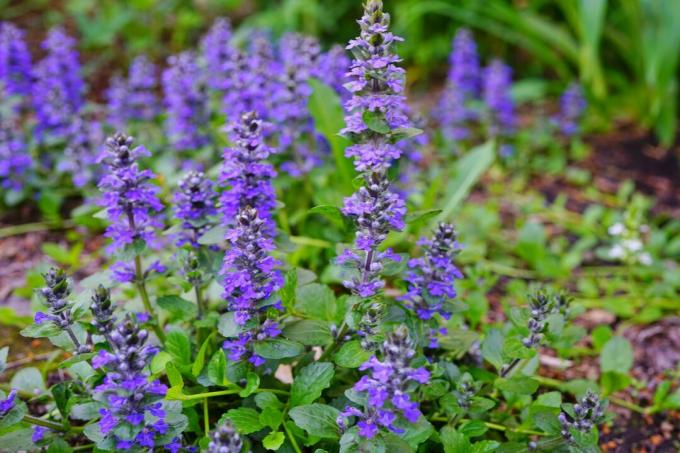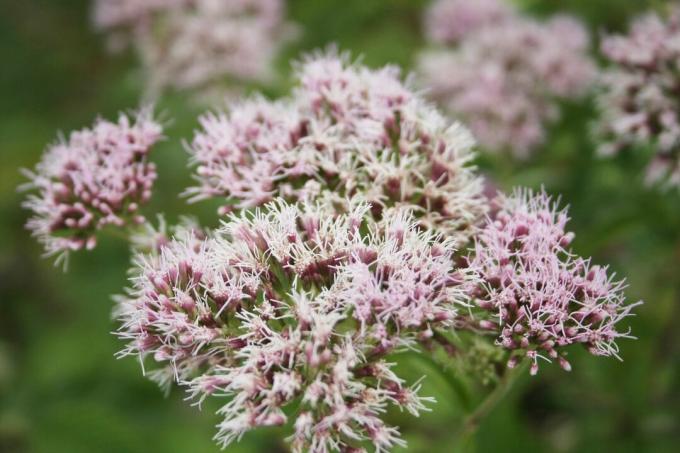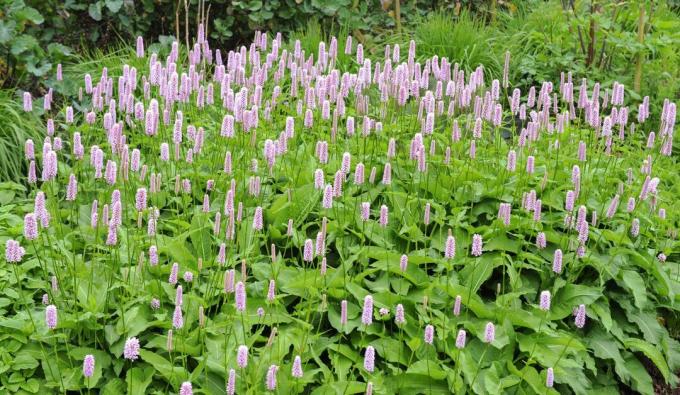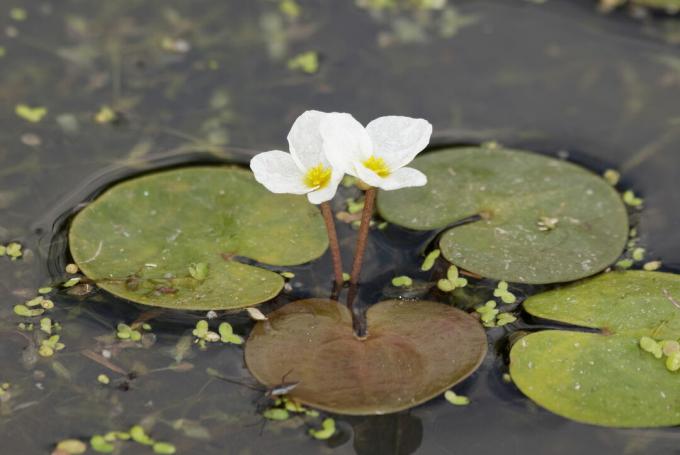Renewing the indispensable plants in the pond after each harsh winter is tiresome and also cumbersome. The solution: Hardy pond plants.

When planting gardens, it is always ideal to use plants that can withstand our weather without much effort. This can also be easily implemented for your own pond.
contents
- Hardy shore plants
- Hardy floating plants
- Expert care tips for the pond
In the following, we have compiled bank plantings and aquatic plants for you, which can also withstand severe frosts in winter. After that, we will also explain to you what it takes to take care of hardy pond plants should be noted.
Hardy shore plants
In the cold season, the pond plants not only have to be able to withstand the frosty air temperatures, but also the possibly frozen water surface. Below we present some hardy plants for the banks of your garden pond, most of which are permanently fresh to moist.
-
crawling bugle (
Ajuga reptans):
The Günsel grows wonderfully as a ground-covering pond edge perennial, also between the stones. The dark red foliage and the beautifully shaped rosettes are a real eye-catcher. It is also extremely vigorous and adorns itself with large violet flower candles in May. As a native plant, it does not require any special winter protection.

-
Common lady's mantle (Alchemilla vulgaris):
The semi-tall perennial is widespread throughout Europe and inhabits moist, calcareous and nutrient-rich soils. the lady's mantle is hardy, but should be cut back after flowering so that it sprout again before the cold winter months. The young leaf rosette then survives cold temperatures unscathed. -
Ordinary water daffodil (Eupatorium cannabium):
The wild perennial native to us grows very well even on wet surfaces. The pink to reddish flowers do not appear until July, but can then be seen well into October. The common water daffodil is hardy in all locations in Central Europe, as it moves into the ground as a perennial in autumn.

-
Real meadowsweet (Filipendula ulmaria):
The real meadowsweet feels very comfortable in the semi-shade at the edge of a garden pond. All other species, such as the Little Meadowsweet (Filipendula vulgaris), are hardy with us. Due to the salicylic acid it contains, it has an analgesic and fever-reducing effect. Therefore, a tea is often prepared from the dried flowers in folk medicine. -
Swamp Cranesbill (Geranium palustre):
This geranium prefers shady to half-shady locations on the bank of the pond. The violet flowers appear from July to September. Wild populations can also be discovered on native marshy meadows. Special winter protection measures are therefore not to be taken.

-
Pennywort (Lysimachia nummularia):
The vigorous Pennywort likes to grow on moist, nutrient-rich soil. It makes a wonderful groundcover and produces small yellow flowers from June to August. The coin herb, as it is also known, is native to Central Europe and is usually hardy. -
meadow knotweed (Polygonum bistorta):
The plant with the beautiful, tall, light pink inflorescences flowers from May to June. The meadow knotweed is quite willing to spread and is therefore a wonderful ground cover for near-natural bank plantings. Most knotweed plants are hardy in our latitudes. However, protective measures may be necessary in particularly harsh situations.

Hardy floating plants
Floating plants have the opportunity to absorb most of the nutrients in the water, so less algae form. Another advantage is a closed floating plant cover, which shades the water below and also effectively prevents algae growth. However, it is advisable to keep at least 50% of the water surface free to ensure adequate gas exchange. The following floating plants are characterized by their good winter hardiness:
-
frog bite (Hydrocharis morsus ranae):
This rosette-forming aquatic plant feels most comfortable in soft, low-lime water. The circular, heart-shaped leaves are reminiscent of those of water lilies. For hibernation, the frog bite forms permanent buds that sink to the bottom of the pond and sprout again in spring. In small ponds with a low water level, however, the permanent buds must be removed and overwintered in an aquarium.

-
Three-furrowed duckweed (Lemna trisulca):
This cross-shaped duckweed is distributed worldwide, but rarely flowers in Central Europe and instead reproduces vegetatively. In autumn it forms starch as a reserve substance and sinks to the bottom of the pond, where it overwinters until spring. -
dwarf water lily (Nymphaea tetragona):
The small dwarf water lily is also very suitable for ponds with low water levels. There are multicolored cultivars, all of which are hardy and can remain outdoors all year round. An exception is the yellow-flowered hybrid Nymphaae helvola, which is not totally frost hardy and therefore needs to be overwintered indoors.

-
crab claws (Stratiotes aloides):
The water aloe - as the crab claw is also called - forms rosettes of sword-shaped leaves with serrated edges. It comes to the surface of the water only to flower. In autumn, the mother plant sinks to the bottom of the pond and forms so-called turions (also called stick sprouts) as overwintering organs. New daughter plants develop from these in winter. -
floating fern (Salvinia natans):
The floating fern is one of the fern plants and, unlike the frog bite, needs calcareous water to thrive. The leaves, which cannot be wetted by water, float on the water surface. In autumn the plant dies and sinks to the bottom of the pond along with its spores. In the next spring small new plants form from it.

Expert care tips for the pond
Unused plant parts such as withered leaves or fallen leaves from surrounding plants should be removed promptly to prevent them from sinking to the bottom of the pond and rotting there. Likewise, brown shoots, for example from water lilies and other floating plants, should be cut off and removed at best in late autumn.
Notice: If a lot of plant remains rot in the water, there is an extreme accumulation of nutrients, this is also referred to as "eutrophication". This oversupply of nutrients promotes the growth of algae and thus the clarity of the water suffers on the one hand, and on the other hand the other plants also suffer. For some species, which are considered hardy, it is advisable to place the plant basket one water zone lower to prevent the plant from freezing. In the spring you should not forget to put the basket back in its original place.
Further hardy plants can be found here in our overview article.

